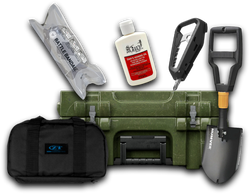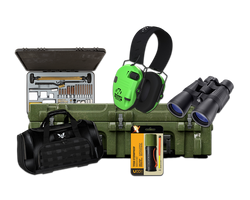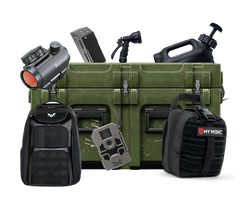Karate for Self Defense: Harnessing the Power of Traditional Martial Arts
Table of Contents
- Introduction
- Understanding Karate: A Brief Overview
- The Effectiveness of Karate for Self Defense
- Choosing the Right Dojo: What to Look For
- Integrating Karate into Your Self-Defense Strategy
- Conclusion
Introduction
Imagine a scenario where you find yourself cornered by an aggressive individual intent on causing harm. Instinctively, you remember your training in karate, a martial art steeped in tradition and discipline. As you prepare to defend yourself, you wonder: can karate truly provide the skills necessary to protect yourself in real-life situations? This question resonates with many who explore martial arts for self-defense, prompting a debate that has persisted for decades.
Karate, with its origins tracing back to Okinawa, Japan, emphasizes striking techniques, discipline, and self-control. Historically, it was developed as a method of self-defense rather than a competitive sport. However, as karate gained popularity worldwide, its effectiveness in real-world self-defense scenarios has come under scrutiny. Critics argue that modern interpretations of karate have strayed from its roots, focusing more on sport than on practical application.
In this blog post, we will delve into the intricacies of karate as a form of self-defense. You will learn about its fundamental principles, the importance of quality training, how to choose the right dojo, and how to integrate karate techniques into effective self-defense strategies. By the end of this comprehensive guide, you will have a clearer understanding of how karate can empower you in self-defense situations and elevate your readiness for any challenge life may throw your way.
Understanding Karate: A Brief Overview
Karate is a striking-based martial art that employs punches, kicks, knee strikes, and open-hand techniques. While its roots are deeply embedded in self-defense, karate has evolved over the years, leading to various styles and interpretations. The beauty of karate lies not only in its physical techniques but also in its philosophy, focusing on respect, discipline, and self-improvement.
The Roots of Karate
Originating in the Ryukyu Kingdom (modern-day Okinawa), karate was influenced by Chinese martial arts and developed as a means of self-defense for the unarmed populace. Traditional karate encompasses various styles, including Shotokan, Goju-Ryu, Shito-Ryu, and Wado-Ryu, each with its unique techniques and training methodologies.
The Evolution of Karate in the Modern Era
As karate gained popularity, particularly in Western countries, it began to be viewed through the lens of sport. Tournaments and competitions emerged, leading to a focus on point fighting rather than practical self-defense. This shift has led to a divide within the karate community, with some practitioners emphasizing traditional techniques while others pursue competitive success.
Debunking Myths About Karate
A pervasive myth about karate is that it is ineffective for self-defense. Critics often cite its transition into sport as a reason for this belief. However, it's crucial to recognize that the effectiveness of karate, like any martial art, largely depends on the practitioner's training and mindset. Quality instruction, realistic practice scenarios, and mental preparedness are key factors that determine a karateka's ability to defend themselves.
The Effectiveness of Karate for Self Defense
Factors Influencing Effectiveness
-
Training Quality: The caliber of instruction and the dojo's environment play a significant role in determining how well you can apply karate techniques in real-life situations. A dojo that emphasizes practical applications and realistic sparring will better prepare you for self-defense than one focused solely on competition.
-
Physical Fitness: Karate training promotes physical fitness, flexibility, and strength. A physically fit practitioner will have the stamina and agility necessary to execute techniques effectively in a high-pressure situation.
-
Mental Preparedness: Self-defense requires not only physical skills but also mental fortitude. Practitioners must cultivate awareness, confidence, and the ability to remain calm under pressure to effectively apply their techniques.
-
Techniques and Principles: While karate encompasses a broad range of techniques, the effectiveness of each technique depends on the context and the practitioner's understanding of when and how to apply them. Basic strikes, such as kicks to vulnerable points or quick evasive maneuvers, are often the most practical in self-defense scenarios.
-
Limitations of Karate: Understanding the limitations of karate is essential. Traditional karate techniques may not be effective against armed assailants or in situations involving multiple attackers. Practitioners should be aware of these limitations and consider integrating other martial arts or self-defense techniques to enhance their skills.
Real-Life Applications of Karate Techniques
Karate techniques can be effectively applied in various self-defense scenarios. Here are some practical examples:
-
Striking Vulnerable Points: Techniques such as the front kick to the groin or palm heel strikes to the nose can incapacitate an attacker, providing an opportunity to escape.
-
Evasive Maneuvers: Practitioners can use footwork to evade attacks and create distance from the assailant. Understanding angles and movement is crucial for effective self-defense.
-
Joint Locks and Throws: Karate also includes grappling techniques that can be utilized to control or immobilize an aggressor. These techniques can be particularly useful in close-quarters situations.
-
Mental Conditioning: Training in karate fosters mental resilience, helping practitioners remain composed during stressful encounters. This mental clarity can be the difference between effectively defending oneself and succumbing to panic.
Choosing the Right Dojo: What to Look For
Finding a quality dojo is crucial for anyone serious about using karate for self-defense. Here are some factors to consider when selecting a karate school:
1. Instructor Credentials
The instructor's background and experience are fundamental to the quality of training you will receive. Look for instructors with a solid lineage in traditional karate, as well as experience in self-defense applications.
2. Training Methods
Inquire about the dojo's training methodology. A good dojo will incorporate practical self-defense scenarios, sparring, and drills that simulate real-world situations. Avoid schools that focus solely on forms (kata) or point fighting without offering realistic applications.
3. Class Structure
Consider the class structure and the balance between beginners and advanced students. A well-rounded program should cater to different skill levels, allowing you to progress at a comfortable pace while still challenging you.
4. Community and Culture
A supportive and respectful dojo culture can significantly enhance your training experience. Observe the interactions among students and instructors to gauge the sense of community within the dojo.
5. Testing and Progression
Inquire about the testing process and how progression is handled within the dojo. A structured progression system encourages continuous improvement and helps students stay motivated.
Integrating Karate into Your Self-Defense Strategy
To maximize the benefits of karate as a self-defense tool, it's essential to integrate it into a broader self-defense strategy. Here are some practical tips:
1. Focus on Awareness and Prevention
Self-defense begins with awareness. Practicing situational awareness helps you identify potential threats before they escalate. Regularly assess your surroundings and develop strategies to avoid confrontations whenever possible.
2. Combine Techniques from Other Disciplines
While karate provides a solid foundation for self-defense, consider integrating techniques from other martial arts, such as Brazilian Jiu-Jitsu for ground fighting or Muay Thai for clinch work. This combination can enhance your effectiveness in various situations.
3. Regular Sparring and Drills
Sparring with a partner allows you to apply techniques in a dynamic environment. Regular sparring sessions help you develop timing, distance management, and adaptability, all of which are essential in a real-life confrontation.
4. Train Against Multiple Attackers
Practicing self-defense techniques against multiple attackers can prepare you for high-stress scenarios. While this training can be challenging, it's vital for developing strategies to escape dangerous situations.
5. Stay Physically Fit
Maintaining physical fitness is critical for executing karate techniques effectively. Incorporate strength training, cardiovascular workouts, and flexibility exercises into your routine to enhance your overall fitness level.
Conclusion
Karate is more than just a series of kicks and punches; it embodies a philosophy of self-discipline, respect, and personal growth. While its effectiveness for self-defense is subject to debate, it can be a valuable tool when practiced with intention and quality instruction.
By understanding the principles of karate, selecting the right dojo, and integrating your training into a comprehensive self-defense strategy, you can empower yourself with the skills necessary to protect yourself in real-life situations. Remember, self-defense is not solely about physical confrontation; it is also about mental preparedness and situational awareness.
As you embark on your journey in karate, embrace the spirit of continuous learning and improvement. Whether you are a beginner or an experienced practitioner, there is always room to grow and refine your skills. Join the Crate Club community to explore tactical gear and survival tools that complement your training and enhance your preparedness. Together, we can cultivate a spirit of readiness and resilience.
FAQs
Can karate help me in real-life self-defense situations?
Yes, karate can be effective for self-defense when practiced correctly. The key is to train in a way that emphasizes practical applications, situational awareness, and mental preparedness.
How often should I train in karate to improve my self-defense skills?
Regular training is essential for developing skills and muscle memory. Aim for at least two to three classes per week, along with additional practice outside of class.
What is the best way to practice karate techniques for self-defense?
Incorporate sparring and realistic drills into your training routine. Practicing techniques against a resisting partner helps you learn how to apply them effectively in real-life situations.
Are there other martial arts that complement karate for self-defense?
Yes, combining karate with techniques from other martial arts, such as Brazilian Jiu-Jitsu or Muay Thai, can enhance your overall effectiveness in self-defense scenarios.
How do I choose the right karate school for self-defense training?
Look for a dojo with qualified instructors, a focus on practical self-defense applications, and a supportive community. Observe classes to gauge the training methods and culture within the school.
For those interested in further enhancing their training and preparedness, consider exploring Crate Club's subscription services for tactical gear and survival tools. Empower yourself with the right tools to complement your karate journey. Check out the Crate Club Subscription Services and the Crate Club Shop for more information.
Compartilhe este artigo



